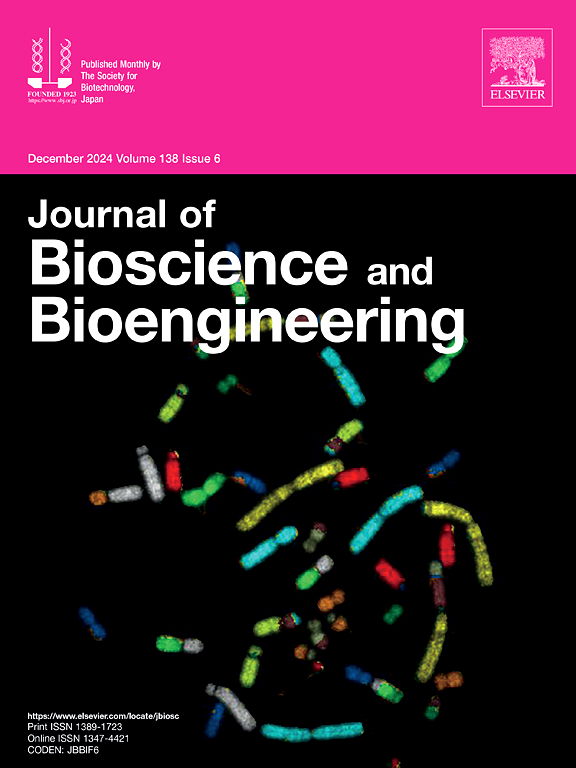Enhanced heparosan biosynthesis in Escherichia coli Nissle 1917 through carbon flux redirection
IF 2.9
4区 生物学
Q3 BIOTECHNOLOGY & APPLIED MICROBIOLOGY
引用次数: 0
Abstract
Heparosan, a critical precursor for heparin production, is naturally biosynthesized as capsular polysaccharides by the probiotic strain Escherichia coli Nissle 1917 (EcN). This study presents a systematic metabolic engineering strategy to enhance heparosan biosynthesis through coordinated pathway engineering and carbon flux redirection. By disrupting glucose catabolism via deletion of zwf and pfkAB, we decoupled cell growth from heparosan synthesis while maintaining precursor availability, elevating titers from 137.68 mg/L to 422.11–486.13 mg/L in mixed carbon source cultures. Subsequent overexpression of UDP-glucose dehydrogenase, a key enzyme in UDP-glucuronic acid biosynthesis, achieved 1.04 g/L heparosan in shake-flask cultivations. Scale-up in a 5-L bioreactor demonstrated industrial scalability, yielding 4.34 g/L heparosan. Our work establishes EcN as a microbial chassis for glycosaminoglycan production and provides a generalizable framework for engineering complex polysaccharide biosynthesis through rational metabolic partitioning.
通过碳通量重定向增强大肠杆菌Nissle 1917中肝磷脂的生物合成。
肝素聚糖是肝素生产的关键前体,是由大肠杆菌Nissle 1917 (EcN)益生菌天然合成的荚膜多糖。本研究提出了一种系统的代谢工程策略,通过协调的途径工程和碳通量重定向来促进肝磷脂的生物合成。通过删除zwf和pfkAB来破坏葡萄糖分解代谢,我们在保持前体可用性的同时,将细胞生长与肝磷脂合成分离,将混合碳源培养的滴度从137.68 mg/L提高到422.11-486.13 mg/L。随后,在摇瓶培养中,udp -葡萄糖醛酸生物合成的关键酶udp -葡萄糖脱氢酶的过表达量达到1.04 g/L。在5升生物反应器中进行放大,证明了工业可扩展性,产率为4.34 g/L。我们的工作建立了EcN作为糖胺聚糖生产的微生物基础,并通过合理的代谢分配为复杂多糖的工程生物合成提供了一个可推广的框架。
本文章由计算机程序翻译,如有差异,请以英文原文为准。
求助全文
约1分钟内获得全文
求助全文
来源期刊

Journal of bioscience and bioengineering
生物-生物工程与应用微生物
CiteScore
5.90
自引率
3.60%
发文量
144
审稿时长
51 days
期刊介绍:
The Journal of Bioscience and Bioengineering is a research journal publishing original full-length research papers, reviews, and Letters to the Editor. The Journal is devoted to the advancement and dissemination of knowledge concerning fermentation technology, biochemical engineering, food technology and microbiology.
 求助内容:
求助内容: 应助结果提醒方式:
应助结果提醒方式:


